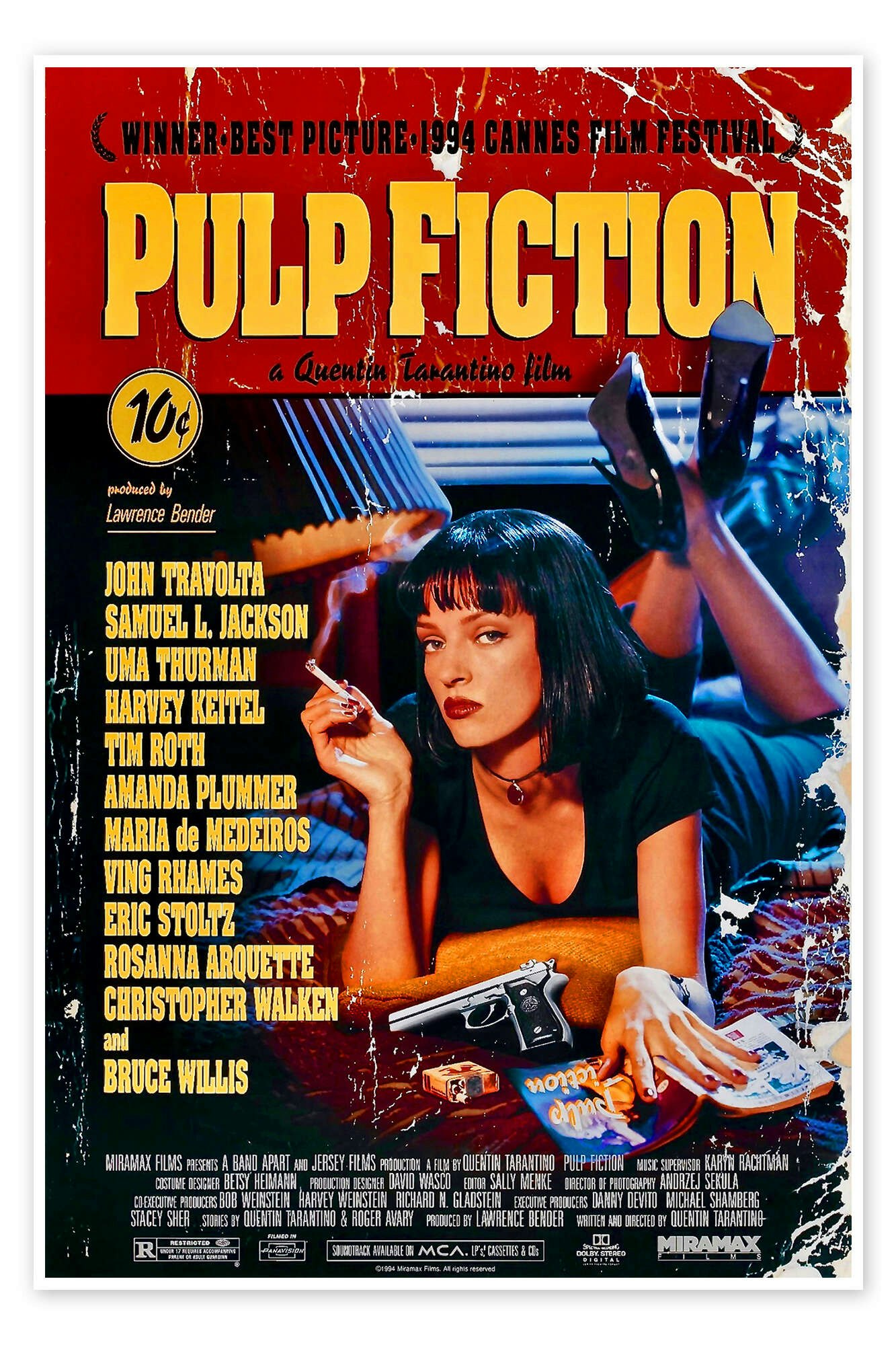This article is taken from the May 2024 issue of The Critic. To get the full magazine why not subscribe? Right now we’re offering five issues for just £10.
“Everybody be cool, this is a robbery!” It’s 30 years since Pulp Fiction hit cinemas, and what a time it was to be young. Uma Thurman gazed down at us from the posters on our student walls as we listened to our taped copies of the soundtrack, involuntarily memorising the snatches of dialogue between the songs, from “tell me again about the hash bars” to “personality goes a long way”.
Not everyone greeted the film with glee. Our parents were reading worried articles in newspapers about this new wave of glamourised screen violence. What did its popularity say about the future of cinema?

Watching the film now, the future of cinema was good, at least until the superhero era. Tarantino has delivered on his early promise, most especially (for my money) with Jackie Brown. Pulp Fiction launched Samuel L. Jackson as a star and relaunched Bruce Willis and John Travolta.
Although in 1994 The Times talked about “fairly horrific violence”, it is the language (and the five minutes that follow the words “bring out the gimp”) that would lead me to urge viewer caution.
It’s strange to think that in the mid-1990s, “Tarantino-esque” was a regular way of describing a film with a large budget for fake blood. Although viewers believed they’d seen Mr Blond cut off a cop’s ear in Reservoir Dogs, or watched Marvin get shot in the face in Pulp Fiction, neither incident appeared on screen.
The director’s later films have far higher body counts, but I showed my teenagers Django Unchained without any qualms.
If I could find a way to explain that Inglourious Basterds isn’t really one of my “boring war films”, I’d show them that, too. For some reason I’m more reluctant about Reservoir Dogs.
I found myself thinking about this coming out of a screening of a new film, Boy Kills World, in which debut director Moritz Mohr delights in showing us the gore. Here, too, at least one head explodes, but this time we definitely see it.

This is not simply a violent film, but an explicitly violent one. We see people impaled, shot, slashed, stabbed and crushed. That is, indeed, the point. The target audience is young and largely male, and I suspect they’ll love it.
The rest of us have been warned, but there are non-bloodstained touches that mark Mohr out as someone to watch. The hero, Bill Skarsgård, is deaf-mute after a childhood trauma, but the film gives him a comically deep inner voice that he remembers from his favourite video game.
In this, he converses with his imaginary little sister, whom only he can see. It is an excellent comic device, and despite my now advanced years I cackled cheerfully through the bits between the gore.

I can’t say that Civil War was nearly as much fun, but I recommend it much more confidently. British writer-director Alex Garland imagines a divided America where a boastful, rambling president in the White House refuses to give up power. Texas and California have joined forces to send armies to remove him.
The idea of an alliance between these two states may be the film’s least plausible aspect, and it’s obviously written in to blunt the inevitable criticism that Garland is another woke Hollywood liberal who hates the idea of America being Great Again.
It’s understandable that American conservatives would assume this, but this really isn’t a film about Republicans and Democrats. It’s a film about, well, civil wars, told through the eyes of the journalists who cover them.
Kirsten Dunst is excellent as a troubled photographer who has documented people killing their neighbours all over the world and now finds herself watching it at home.
Garland wrote the 2002 horror film 28 Days Later, which spawned waves of zombie films and TV shows with its tale of a world suddenly gone wrong. Here he has found a new way to place the horrific in a familiar context.
There is far less gore in Civil War than in Boy Kills World, yet I spent most of the film curled in my seat, my hand over my mouth in horror. In the former film, we watch our barely-armed hero take on squads of police with automatic weapons, confident that he’ll win.
The most terrifying scene in Civil War, the one that haunts the memory and would win any award I could give, sees Dunst and her colleagues facing a single soldier who is casually turning over the question of whether to simply shoot them all.
He has a gun; they don’t. There will be no dramatic moment of martial arts where he is overpowered. If he feels like killing them, they will die.

The difference of course is that Civil War feels real. Boy is full of killing, but it’s what a friend of mine calls “computer game violence”.
As with the very popular John Wick films, or 2022’s Violent Night, in which a disillusioned Santa Claus stumbles upon a Christmas Eve home invasion and proceeds to slaughter the hostage-takers, the plot is best thought of as a series of levels that the hero has to negotiate, pressing the right button at the right moment to deliver the right blood-spattering punch.
It’s not especially my taste, but we needn’t be troubled. Like their parents 30 years ago, the teenagers who pile into Boy Kills World aren’t depraved: they know it’s all in fun.
Enjoying The Critic online? It's even better in print
Try five issues of Britain’s newest magazine for £10
Subscribe



